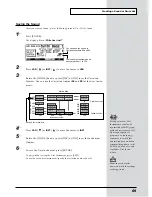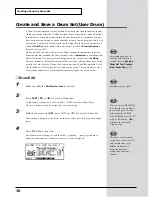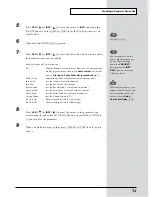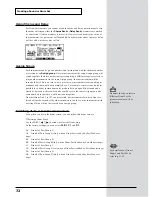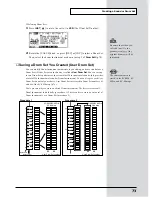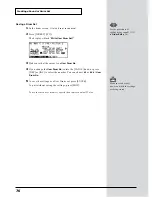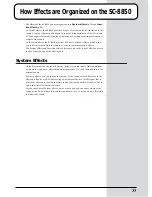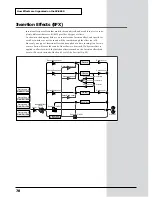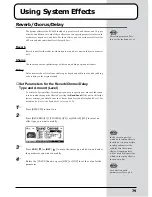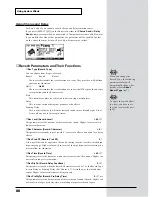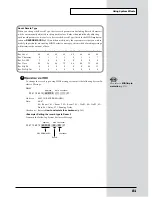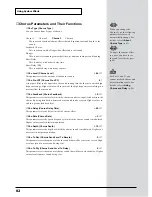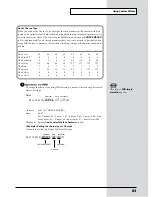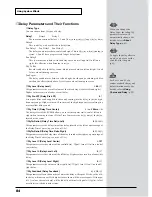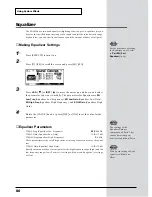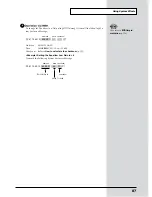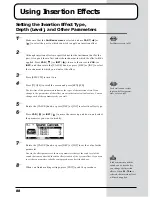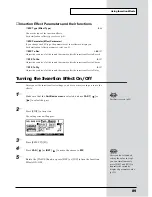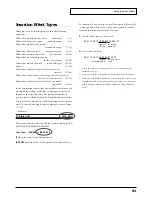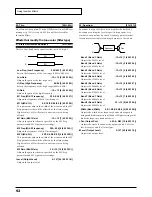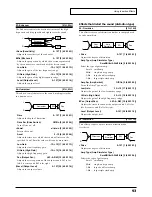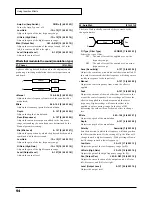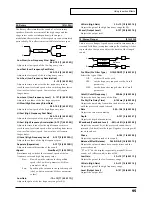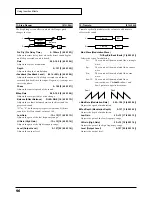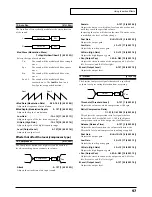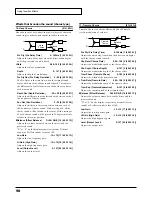
83
Using System Effects
To change the chorus type using MIDI messages, transmit the following System Ex-
clusive Message.
fig.8-1fe
Address:
40 01 38 (CHORUS MACRO)
Data:
00–07
00 = Chorus1, 01 = Chorus 2, 02 = Chorus 3, 03 = Chorus 4, 04 = Feed-
back Chorus, 05 = Flanger, 06 = Short Delay, 07 = Short Delay (FB)
Checksum: Refer to
How to calculate the checksum
(p.245).
<Example> Setting the chorus type to Chorus4
Transmit the following System Exclusive Message.
fig.8-1ke
About Chorus Type
When you change the Chorus Type, the eight chorus parameters will be automatically ad-
justed to the optimal values. Rather than individually adjusting each chorus parameter, it is
easier to first set the Chorus Type (listed in the MIDI implementation as
CHORUS MACRO
p.236), and then modify only those parameters that you wish to modify. In particular when
using MIDI Exclusive messages, this method of making settings will minimize the amount
of data.
Chorus1 Chorus2 Chorus3 Chorus4 FbChorus Flanger SDelay SDelayFb
Cho Level
64
64
64
64
64
64
64
64
Cho Pre-LPF
0
0
0
0
0
0
0
0
Cho Feedback
0
5
8
16
64
112
0
80
Cho Delay
112
80
80
64
127
127
127
127
Cho Rate
3
9
3
9
2
1
0
0
Cho Depth
5
19
19
16
24
5
127
127
Cho To Rev
0
0
0
0
0
0
0
0
Cho To Dly
0
0
0
0
0
0
0
0
Also refer to
MIDI Imple-
mentation
(p.236).
F0 41 10 42 12 [ 40 01 38 ] [ ] [ ] F7
address
data
checksum
DELAY:
. .
. .
F0 41 10 42 12 [ 40 01 38 ] [ 03 ] [ 04 ] F7
CHORUS MACRO
Chorus 4
address
data
checksum
checksum

